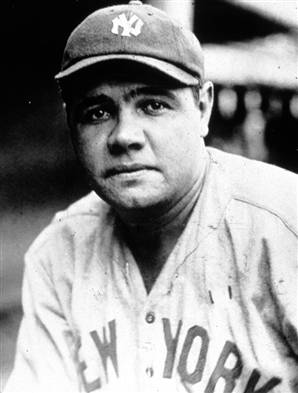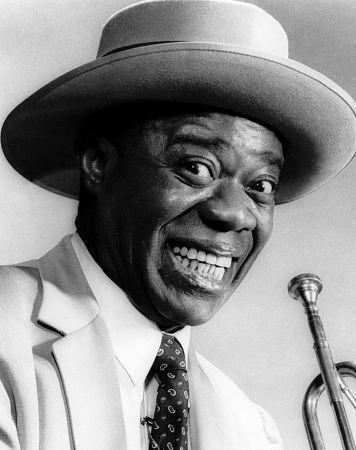Adventures of the 1920’s
The cold air fills the lungs of miserable working men. A plead for mercy drifts onto a gust of wind.
Hope is lost in the endless patches of ice and freezing water. The smooth
surface of a camera rubs against a workers hand. CRACK! Eyes of desperate men
shoot to the ship. Pieces start to break and crumble. A stormy cloud of despair
settles over the ship. Waiting. Watching. Hoping. The men stare at the ship
while it slips under the ice. Helpless and stranded, they stand on the hard,
icy ground in shock, unable to process the devastating series events that had
happened and that lie in their path. Their hearts sink unto their stomachs. A
stinging breeze glides across their faces. Shackleton blatantly stares into the
miles of empty space that he would soon fight for survival in. The crew looks
at the pen mass of icebergs and impure water. Their eyes fill with desperation
and their stomachs with pity and lost dreams. They endured through days of
vigorous travelling and miserable coldness. Shackleton and his crew survived
years of nothing but rowing boats in icy waters and fending for what they held
dearest, their lives.
Adventure in the 1920’s lured in both men and women who
showed courage, but one man in particular, Sir Earnest Shackleton, was brought
into one of the most dangerous adventures of American history. Although,
Earnest Shackleton had many trips and goals in his life, he didn’t just
accomplish them, he persevered through them with courage and bravery. Shackleton
was a brave man who would promenade into a situation put in his hands, and come
out of it with more dignity and pride. He had many goals in his lifetime. Even
though he tried his hardest to achieve them, not all of them were within his
reach. Not only did he have numerous goals, he approached prevalent adventures.
He attempted to reach the North Pole twice, but both time he sadly failed. He
didn’t give up on his dreams though, which showed he had courage. He wasn’t
just any average person who had a dream to sail across the open seas, he was a
selfless man who didn’t just care about himself he cared about everyone around
him and while on his journeys, that definitely paid off. One of his most famous
adventures was his attempt to sail across the Antarctic: many called the trip,
the endurance. His trip was one that would shift his life into a completely
different direction. He set sail on November of 1914. He picked twenty seven
crewmen and took nearly seventy sled dogs. He started off into an environment
hostile to human life that held many dangers and commodities that no one would
dare think about running into. Nothing stopped him from going, which
demonstrated the determination and fearlessness he had. Icy winds up to one
hundred miles per hour rocked the ship as it sailed through the patches of ice
and water.( youtube,
Saptakmandal) Eventually the ship
couldn’t push through the ice any longer, and froze to the solid ice. Workers
tried to break the ship free for days and days, but it seemed impossible. The
temperature dropped rapidly, leaving the men stranded. Things couldn’t possibly
get any worse, or could they? The cold air filled the lungs of miserable
working men. A plead for mercy drifts
onto a gust of wind. Hope is lost in the endless patches of ice and freezing
water. The smooth surface of a camera rubs against a workers hand. CRACK! Eyes
of desperate men shoot to the ship. Pieces start to break and crumble. A stormy
cloud of despair settles over the ship. Waiting. Watching. Hoping. The men
stare at the ship while it slips under the ice. Helpless and stranded, they
stand on the hard, icy ground in shock, unable to process the devastating
series events that had materialized on their path to Antarctica. Their hearts
sink unto their stomachs. A stinging breeze glides across their faces.
Shackleton blatantly stares into the miles of empty space that he would soon
fight for survival in. The crew looks at the pen mass of icebergs and impure
water. Their eyes fill with desperation and their stomachs with pity and lost
dreams. They endured through days of vigorous traveling and miserable coldness.
After the ship stranded them, Shackleton knew that he had to protect his crew
so that they could survive. The men started to gain hope in Shackleton. They decided to try and reach Elephant Island
by row boat. It took Months to get there, and along the way all they had to eat
was penguin, blubber, and other unknown things. After they finally arrived at Elephant
Island, Shackleton picked a few people to start off to Georgia Island. He never
stranded them or left them to fend for themselves ( PBS. PBS). After they left, they had a hard journey
ahead of them, but they made it. Because of Shackleton’s kindness and
consideration for his crew, he saved every single mans life. None of the men
died on that trip and they went on to go on more adventures and explorations. (youtube
Saptakmanda)
Not only was Shackleton a daring adventurer, a woman named
Amelia Earhart became one of the most respected and well know risk takers of
America’s history. Amelia took many adventures, crossed the Atlantic Ocean by
plane, attempted to fly around the world twice. Amelia knew that she was born
for flying planes ever since she was a little girl, and that’s what pushed her
to set records and go on dangerous expeditions such as being the first woman to
ever fly across the Atlantic. She wasn’t of failure, because she would just try
again. She started up the smooth charcoal black runway and was of to prove the
world that women could do anything men could do, possibly even better. She had
many struggles along the way such as rough turbulence and other near
catastrophes. The trip as a whole took twenty hours and forty minutes, and that
was the title of one of the books she wrote.( "Amelia Earhart Flies Across the
Atlantic.) She could now officially
be called, a courageous woman. She was fearless, courageous, and daring. She
was the woman of the decade. After she successfully flew around the world, she
started on her first attempt around the world. She started on the Honolulu
runway nearing her trip towards the adventure of a lifetime. She turned on the
roaring engine. The plane rolled along the long black pavement, gaining speed
and momentum. She though everything had been checked, but a problem occurred
that result in a runway crash. She was not injured but failure had been set at
her feet, waiting for her to kick it away and try again. Later that year, 1937,
she tried again at her goal of flying around the world. Courage and bravery ran in her veins.
Adrenaline pumped through her body as she departed from the runway. She was so
close to achieving her goal of flying solo around the world, it was practically
in her hands already. She never gave up on her dreams no matter how scary they
were. She once said” The most difficult thing is the decision to act, the rest is merely
tenacity. The fears are paper tigers. You can do anything you decide to do. You
can act to change and control your life; and the procedure, the process is its
own reward.” She always acted with confidence and
dignity. She achieved some of the most unimaginable goal a woman could dream
of. Although she started off her trip around the world with fierceness and
bravery, she never got to finish because she disappeared in the middle of her
trip.(
centennialofflight) The people controlling and talking
to her got some messages from her before she disappeared such as there was
rough weather and turbulence.( youtube, NationalGeographic) She always fought through her
trials and usually succeeded, and even though she didn’t succeed her last time,
she went out of the race with goals that had been acquired.( "Amelia Earhart." Amelia
Earhart)( bing.com)
Sir earnest
Shackleton and Amelia Earhart both had dreams of their own, but Gertrude
Ederle, a famous speed swimmer, had unique ambitions that she more than
achieved, she made them her life. After realizing that swimming is what her
passion was, she made it to the Olympics and swam in many, many races. The
Paris Olympics were incredible. She set nearly twenty nine records ranging from
fastest speed in the one hundred meter butterfly to the four hundred meter
freestyle.( REAL
VERSION." NBC New York) She loved swimming. It was
more than a hobby to her it was her passion, her life. She also swam in the
sea. It was her best friend. She said once, "To
me, the sea is like a person - like a child that I've known a long time. It
sounds crazy, I know, but when I swim in the sea I talk to it. I never feel
alone when I'm out there." She also had many, many races. Some were local
for her and others were national. One of her really memorable races was when
she swam a twenty one mile race across the Lower New York Bay, the water was
frigid and the hair on her skin stood up.( "Swim-City.com - Swimming
Metropolis." Swim-City.com) She was excited and nervous at
the same time. The race took over seven hours of non-stop swimming in the bleak
waters, but she didn’t care, every second was worth it. She was a risk taker
who would do what it took to achieve her goals and dreams. She never gave up
and she tried her hardest at everything she did. She had many accomplishments
in her lifetime. Not only did she swim races and set records in the Paris
Olympics, she was the first woman to every swim the English Channel. She had to
be drenched in Greases and jellies of different sorts. The first time she tried
to swim it her coach secretly poisoned her so that she would get sick and be unable
to swim the full length. After minutes of struggling, An Egyptian swimmer
eventually pulled her out of the water. Her courage kept pushing her through
her trials and she decided to try again. The got up on a bright early morning
in 1926, she was ready to do what people thought was impossible for women, swim
the complete length of the English Channel. She persevered through the rough
waters. She dodged jellyfish and sharks that could have been fatal to her swim.
She made it in fourteen hours and thirty one minutes. Over two hours faster
than any man had ever swum it. She accomplished her dreams and never gave up,
that is what made her a courageous, brave, fearless, and bold young woman.
Adventurers of the
nineteen twenty’s were not only daring went to extreme measures to achieve
their goals. Sir Earnest Shackleton was one of the most fearless men of
American history by far. He endured through many trials that he faced and never
gave up on himself or his peers when it came to survival or anything else for
that matter. Amelia Earhart was an American idol for many people. People
praised her for he talents, she achieved numerous goals, and while trying to
persevere through her trials, she learned to be a courageous woman. Gertrude
Ederle, much like the other adventurers, she set multiple goals for her life,
and achieved them. Even if she failed the first or second time trying to break
a record or do the impossible the always tried again and usually succeeded
because of that. All three adventurers ended their races with dignity and
pride, and never gave up on a dream.


